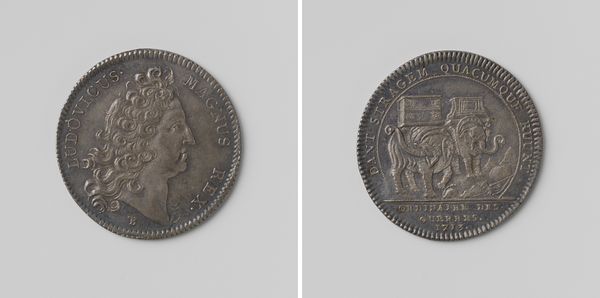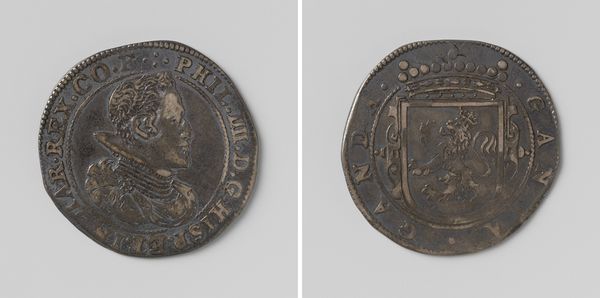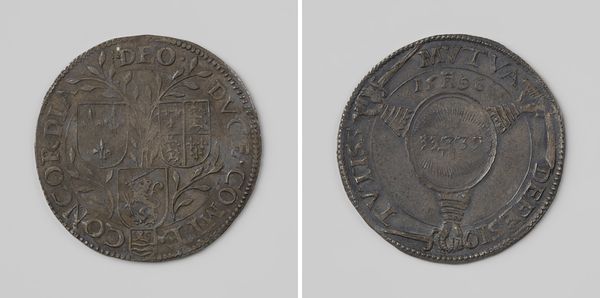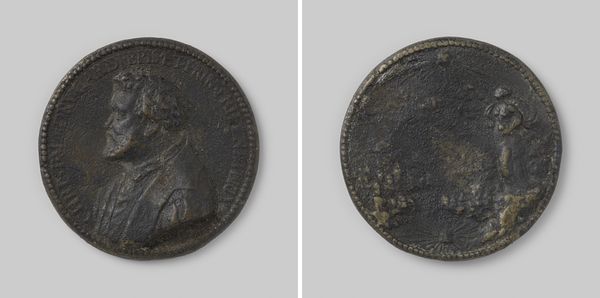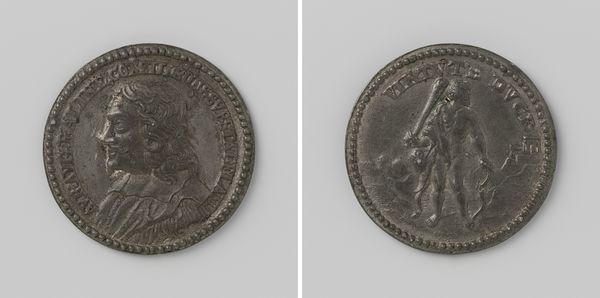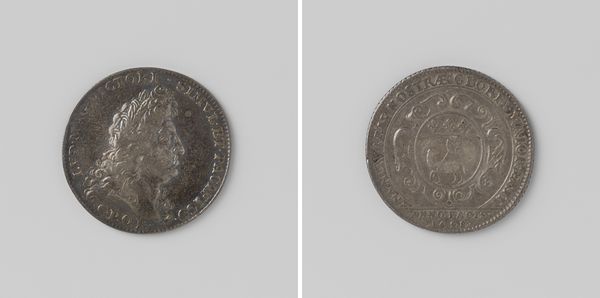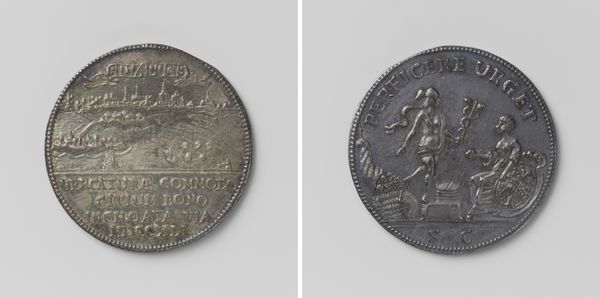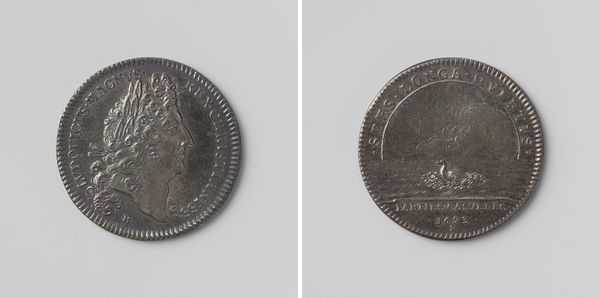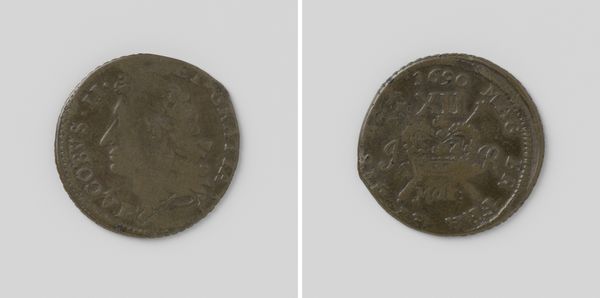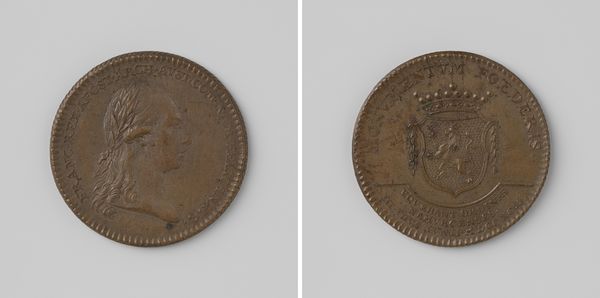
metal, relief, sculpture
#
portrait
#
metal
#
sculpture
#
relief
#
11_renaissance
#
sculpture
#
statue
Dimensions: diameter 6.8 cm, weight 731 gr
Copyright: Rijks Museum: Open Domain
Editor: This is a two-sided metal relief of Lucas Munich, Abbot of Saint Bavo in Ghent, made in 1559 by Jacques Jonghelinck. It’s struck with such gravity and presence… but honestly, my first thought was – is that a *tree* on the back? I’m curious what you make of it all? Curator: Ah, yes! I see what you mean by "gravity" - you can almost *feel* the weight of history and the weight of, well, the metal itself! Jonghelinck really knew how to give presence to a person – or a tree, for that matter! But what grabs me is the Renaissance impulse to capture an individual so precisely. Do you feel you get a sense of Lucas Munich’s character just by looking at it? Editor: I do, yes. There's a certain...sternness, but also a kind of quiet dignity in his expression. And that intricate detail on his robes, wow! What’s with the heraldry on the back side? I guess it makes the piece look important… Curator: Precisely! Think of heraldry then as like corporate branding now; everyone wanted a logo. The oak tree growing from a hill probably has to do with his family, with some religious symbols thrown in, naturally! It says so much about identity, both personal and familial in that period, what aspects you emphasized... I see this as a double portrait: the abbot AND his self-image as someone divinely ordained. It says a lot about the person’s place in the world and in relation to God. Editor: I never would have thought of heraldry that way. It does make a little more sense than the logos everywhere today, maybe. So much more thought, definitely more work! Curator: Exactly. And that kind of "thought work" makes it still vital after all these centuries. We should all commission art about ourselves more often; then folks would truly think about who they were!
Comments
No comments
Be the first to comment and join the conversation on the ultimate creative platform.



